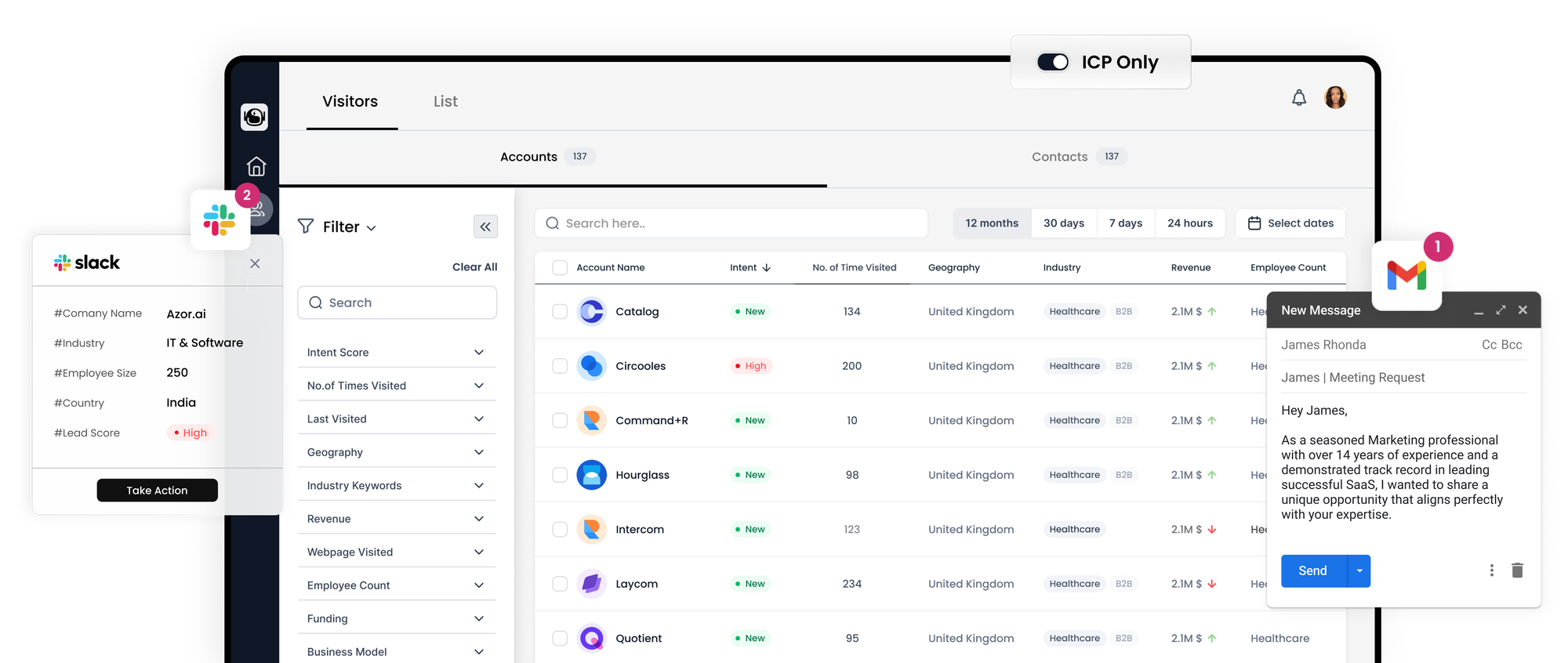Understanding Demand Generation: Strategies and Key Insights

Introduction to Demand Generation
Demand generation encompasses various activities aimed at raising awareness and interest in a business's products, services, or offers, with the ultimate goal of generating leads. In essence, it involves actions that stimulate demand within a target audience, driving business growth. Demand generation is a comprehensive term that covers all marketing and sales initiatives, spanning every stage of a customer's journey, from initial interest to customer retention.
Evolution of Demand Generation
Demand generation has evolved in recent times, extending beyond mere demand creation for sales. The advent of conversational marketing has transformed demand generation by enabling marketers to engage in real-time conversations with their audience online. This shift allows marketers to initiate early conversations with potential buyers, maintaining a continuous dialogue throughout the customer journey, ultimately leading to conversions and loyal customers.
It's essential to emphasize that demand generation is not about artificially creating demand. Instead, it focuses on organically stimulating demand through effective marketing practices. By providing timely and relevant information to the right audience, demand generation meets the needs of ideal customers and offers viable solutions to real problems or queries.

Distinguishing Demand Generation from Lead Generation
While demand generation and lead generation are often used interchangeably, they represent distinct aspects of marketing. Demand generation is a holistic, long-term marketing strategy that addresses all stages of the customer journey, covering awareness, consideration, research, and justification. Lead generation, on the other hand, is a subset of demand generation that specifically focuses on converting targeted audiences into high-quality leads. It involves collecting information from leads and nurturing them into customers through natural processes, as opposed to paid methods.
While demand generation and lead generation differ, an effective marketing strategy should encompass both, incorporating lead generation tactics to gather valuable information for sustained success.
The Significance of Demand Generation
Several factors underscore the importance of demand generation as a marketing strategy:
1. Building Genuine Relationships
Demand generation involves providing value to ideal customers through channels they already frequent. By meeting customers where they are, businesses establish trust and build authentic relationships. Addressing target audience problems fosters trust, setting the stage for long-term sales and business success.
2. Establishing Trust
Building brand authority and trust is crucial for any business. Demand generation contributes to this process by sharing content that educates and inspires ideal customers. Even if customers aren't immediately ready to make a purchase, they will remember and trust your brand as a reliable source to meet their needs and solve their problems, potentially leading to future sales.
3. Attracting More Qualified Leads
Targeted demand generation activities focus on lead quality rather than quantity. By running tailored campaigns, businesses attract higher-quality leads, resulting in better alignment between businesses and customers, often leading to increased sales. Understanding your ideal customer profile (ICP) is crucial in attracting quality leads.
4. Generating More Revenue
Successful demand generation can convert demand into measurable interest and predictable revenue. While revenue generation may take time, especially when attracting customers organically, nurturing leads throughout the marketing funnel can ultimately lead to sales, resulting in increased revenue over time.
Demand generation is a holistic marketing approach that treats potential customers as more than just numbers. This comprehensive strategy aims to build long-term relationships with leads, fostering growth, revenue, and business longevity over time.
At Directive, we take pride in our marketing expertise and have harnessed the knowledge of our seasoned search marketers and PPC consultants from various departments to offer you 15 valuable demand generation tips that can propel your business forward.
1. Strengthen the Collaboration Between Sales and Marketing
While not a groundbreaking idea, it's essential to emphasize the significance of aligning sales and marketing efforts. In the digital era, this alignment has become increasingly crucial. As a marketer, engaging with a client's sales team provides valuable insights into their challenges, strengths, goals, and mission. This collaboration equips marketers to create strategies that align with sales objectives, reducing wasted resources and optimizing success. Sales teams hold vital information about your target audience, helping shape impactful advertising and landing pages.
2. Prioritize Quality Content
Content is a driving force behind demand generation, but quality surpasses quantity. To stimulate demand for your products or services, every piece of content must stand out and offer value. Analyze buyer personas, incorporate informative infographics, and provide actionable takeaways. Producing high-quality content positions you as a valuable resource and sets the stage for demand generation success.
3. Define Your Unique Value Proposition
A compelling value proposition is essential for selling your product. Clearly articulating what sets your product apart from competitors is crucial. Ask yourself, "Why should a consumer choose my product over my competitors'?" A well-defined value proposition can be a powerful tool for demand generation.
4. Build Trust Through Social Proof
Trust is a cornerstone of demand generation. Incorporating social proof, such as client testimonials, logos of previous clients, and online customer reviews, establishes credibility and fosters trust among potential customers. Trust is a critical factor in creating demand.
5. Stay Updated on Competitor Strategies
Marketing tactics are ever-evolving, and your competitors may be implementing more effective strategies. Regularly assess your competitors' websites and conduct in-depth competitor analysis to identify areas where they outperform you. Emulating successful competitor strategies can yield quick wins for your business.
6. Craft Irresistible Call-to-Action (CTA) Offers
Move away from generic "Contact Us" CTAs that require extra effort from users. Instead, create CTAs based on the value you offer, making it difficult for users to resist. Examples include "Download Free White Paper," "Send My Free Quote," and "Start My Free Trial."
7. Tailor Your Messaging to Your Audience
Avoid excessive self-promotion and focus on how your product benefits your audience. Create a copy that aligns with your audience's needs and aspirations. Unless your business is a widely recognized brand, concentrate on enticing users with compelling offers rather than saturating your content with self-promotion.
8. Harness the Power of Podcasts
Podcasting has gained immense popularity and is effective in increasing traffic generation, building brand awareness, and boosting purchase intent. Podcast ads can make listeners more aware of new products or services. Incorporate podcasts into your marketing strategy to tap into their growth potential.
9. Utilize Shareable SlideShares
SlideShares can serve as effective lead magnets if they are shareable, informative, and engaging. These visual presentations can generate views and clicks for years, especially if the content remains relevant and evergreen.
10. Leverage Whitepapers
Whitepapers, persuasive reports addressing specific problems and providing solutions, can drive demand by highlighting industry or business challenges. They serve as valuable lead generation tools by creating demand for products and services offered in the whitepaper's solution.
11. Embrace Guest Posting for SEO and Demand Generation
Guest posting is vital for SEO as it enhances website authority and search engine rankings. Additionally, it generates demand for your services or products by leveraging backlinks and brand mentions on other websites.
12. Emphasize Longform Content
Longform content, typically exceeding 1,000 words, is essential for SEO. It enhances user engagement, reduces bounce rates, and increases the average time users spend on your pages. Content with over 2,000 words is highly regarded across SEO metrics and tends to drive social engagement, creating demand for your products and services.
13. Create Informative Tutorials
Tutorials not only simplify product or service usability but also establish non-transactional relationships with customers. By developing personal connections with potential customers, you create demand for the products or services you offer.
14. Host Engaging Webinars
Webinars are valuable for promoting new products and fostering strong relationships with customers, clients, and industry peers. They can generate demand by offering exclusive discounts to viewers, driving interest in your offerings.
15. Offer Free Products to Provide Value
Prioritize providing value to customers before building a large following. In B2B businesses, relationship-based strategies are crucial. Giving away free products can set you apart from competitors and drive demand for your target audience. This approach can also create a referral system, further enhancing demand generation.
Implementing these demand generation strategies can elevate your marketing efforts and drive meaningful results for your business.
